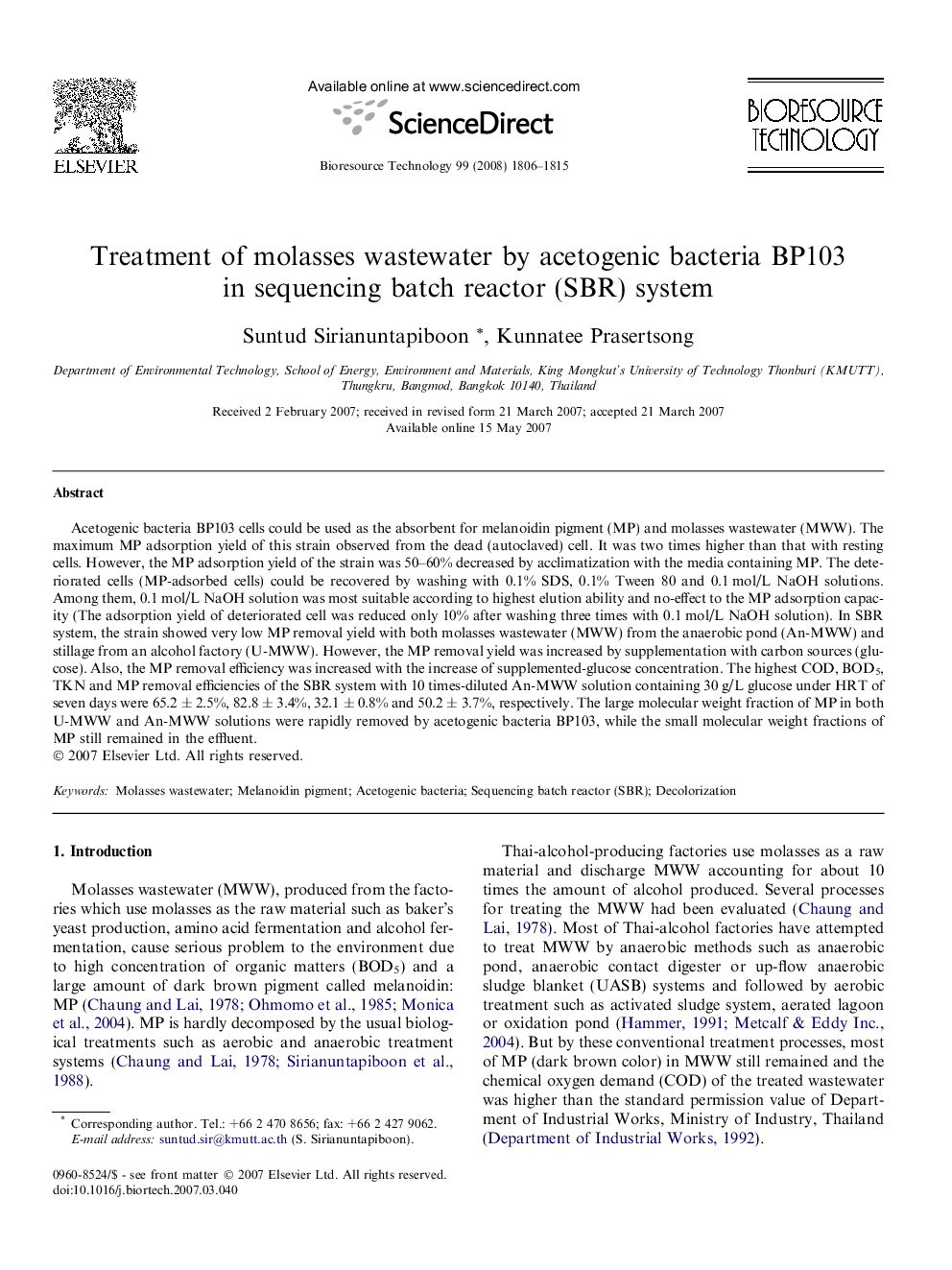| کد مقاله | کد نشریه | سال انتشار | مقاله انگلیسی | نسخه تمام متن |
|---|---|---|---|---|
| 684689 | 889025 | 2008 | 10 صفحه PDF | دانلود رایگان |

Acetogenic bacteria BP103 cells could be used as the absorbent for melanoidin pigment (MP) and molasses wastewater (MWW). The maximum MP adsorption yield of this strain observed from the dead (autoclaved) cell. It was two times higher than that with resting cells. However, the MP adsorption yield of the strain was 50–60% decreased by acclimatization with the media containing MP. The deteriorated cells (MP-adsorbed cells) could be recovered by washing with 0.1% SDS, 0.1% Tween 80 and 0.1 mol/L NaOH solutions. Among them, 0.1 mol/L NaOH solution was most suitable according to highest elution ability and no-effect to the MP adsorption capacity (The adsorption yield of deteriorated cell was reduced only 10% after washing three times with 0.1 mol/L NaOH solution). In SBR system, the strain showed very low MP removal yield with both molasses wastewater (MWW) from the anaerobic pond (An-MWW) and stillage from an alcohol factory (U-MWW). However, the MP removal yield was increased by supplementation with carbon sources (glucose). Also, the MP removal efficiency was increased with the increase of supplemented-glucose concentration. The highest COD, BOD5, TKN and MP removal efficiencies of the SBR system with 10 times-diluted An-MWW solution containing 30 g/L glucose under HRT of seven days were 65.2 ± 2.5%, 82.8 ± 3.4%, 32.1 ± 0.8% and 50.2 ± 3.7%, respectively. The large molecular weight fraction of MP in both U-MWW and An-MWW solutions were rapidly removed by acetogenic bacteria BP103, while the small molecular weight fractions of MP still remained in the effluent.
Journal: Bioresource Technology - Volume 99, Issue 6, April 2008, Pages 1806–1815